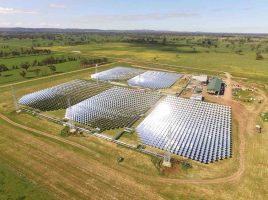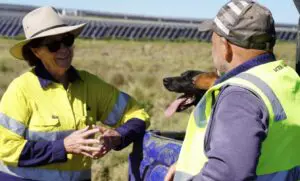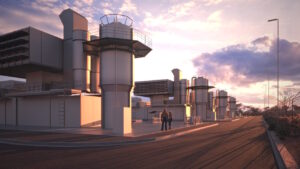Opposition leader Peter Dutton has reportedly compared wind turbines to 5G telecom towers as he sought to convince a business audience that the federal Coalition are “huge supporters of renewable energy”.
The federal Coalition, according to several mainstream media reports, is scrambling to try and convince the clean energy industry that it has no intention of stopping the roll out of renewables, even though that is the express intention of National leader David Littleproud, who has vowed to “tear up” contracts written by the Commonwealth.
The proposed roll out of nuclear power plants – including technologies that are not yet commercially available – and the lack of policy details has sparked fears that investment in large scale wind and solar could grid to a halt, threatening Australia’s already weak emissions reduction targets, and opportunities in a low carbon economy.
Dutton and his climate and energy spokesman Ted O’Brien have been seeking to reassure business people and investors that bringing a halt to renewables is not their intention, although they have refused to comment on what sort of market share they intend renewables to have.
The federal Labor government has a target of 82 per cent renewables, based around modelling from the Australian Energy Market Operator which says that a combination of wind, solar, storage and firm capacity is the cheapest and most reliable way of replacing the country’s ageing coal fired power station.
This week AEMO released the latest version of its Integrated System Plan, which shows that a yawning gap in supply should the Coalition go ahead with its nuclear plan and slow down the rollout of wind and solar.
“We’re huge supporters of renewable energy,” said Dutton, who has described offshore wind farms as a travesty, according to a Guardian report.
“It needs to be in the system, he added. “But we have to stop pretending it can work 24/7.” (No one actually does, hence the need for storage and firming power that has been costed by the CSIRO and AEMO).
According to the Guardian journalist reporting on a Committee for Economic Developer of Australia event, Dutton then talked about social licence for renewables, claiming that his electorate would be “rioting” if 10 wind towers were proposed in a community that “goes crazy” about 5G towers.
Dutton noted that AEMO forecasts 90 per cent of “firming power” – coal and “baseload” gas – will close by 2034, but insisted that battery storage is not feasible, and nor is green hydrogen.
The Coalition has claimed it can have the first small modular reactor operation by 2035, but energy analysts, who point out that no commercial SMR operates in the world, and none even has a licence for construction, say it is unlikely to have any nuclear reactors until the mid 2040s.
That will leave a massive gap in supply, given the forecast increases in demand from electrification of homes and industry, the switch to electric vehicles and the opportunities in green manufacturing, if grid emissions are low enough.
“Australia hosts some of the world’s best wind and solar resources and has an abundance of land to build them on,” said Leonard Quong, the Head of Australian Research at BloombergNEF in a new report.
“Its aging coal fleet will largely retire by 2035. So, to avoid power supply shortfalls and high electricity bills, shuttered coal assets must be replaced by a mix of low-cost renewables and energy storage, well before nuclear could make a material difference.”
He said nuclear has a role to play in global decarbonisation plans, but would be particularly expensive in Australia because of its limited experience, unsupportive politics and uncertain regulation.
- “To get to its legislated net-zero target, Australia will need to more than double its electricity production by the middle of the century, while also reducing carbon intensity,” he said.
“Nuclear power could lower the amount of wind, solar, storage, and power networks Australia would otherwise need to build – but not by much even in a scenario with 14 gigawatts of nuclear installed by 2050, and at a steep, uncertain price.
- “Nuclear could play a valuable, if expensive, role in Australia’s future power mix. However, if the debate serves as a distraction from scaling up policy support for renewable energy investment, it will sound the death knell for its decarbonization ambitions – the only reason for Australia to consider going nuclear in the first place.”










